Preah Khan Temple is a grand complex in Siem Reap that is rich in majestic ancient structures and marvelous sculptures. It’s amazing how most of the signature features of the popular sites in Siem Reap can be found here. Exploring this temple complex will give you flashes of images of the previous sites plus more.

This site has iconic towers like in Angkor Wat, trees that have grown out of the temples like in Ta Prohm, a reservoir like in Srah Srang, a tall temple ruin resembling Parthenon and plenty of artistic statues and bas-reliefs like in The Terrace of the Elephants. Also known as “The Royal Sword” it’s undeniably magnificent and extravagant in many aspects.

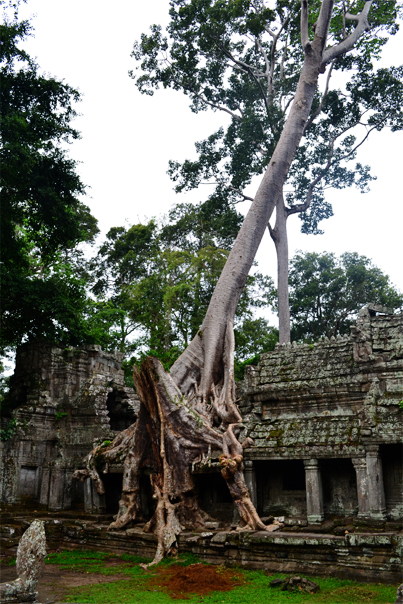
History of Preah Khan Temple
Preah Khan was constructed in the late 12th century during the reign of King Jayavarman VII. He dedicated this temple to his father, King Dharanindravarman the way he dedicated Ta Prohm to his mother Prajñaparamita. There’s a possibility that the site started from the original palace of King Tribhuvanadityavarman and Yasovarman II. It’s one of the few temples that were able to keep its original name.


There’s an indication that a major warfare took place in the site because of its reference as “Lake of Blood” when the Khmer Empire defeated the Chams and recaptured this territory. The Cham king was known to have died here. Beyond being a temple this could have also been used as a university considering that there were 1,000 teachers assigned here before.
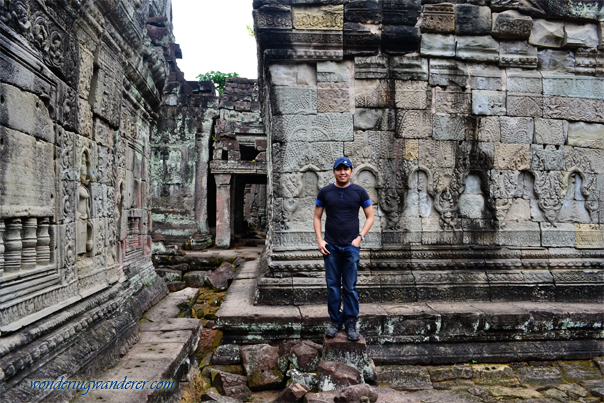
Exploring Preah Khan Temple
This temple was the first one in our list during our second-day tour at the Angkor Archaeological Park. It was a pleasure to see its grandiose gate with the signature gigantic smiling faces like in Bayon Temple. Upon entering the gate, we saw an unusual set of boundary stones that were lined up toward the second gate. They’re filled with wonderfully carved images of Garuda and another figure with a lion head.


Among all of the temples that we entered in, this seems to have the fanciest pathway. After the passing by its grandiose boundary stones, another set of boundary statues welcomed us which are headed by nagas and followed by large human statues. Most of the human statues are unfortunately headless already. The faces of the nagas are pretty damaged as well.

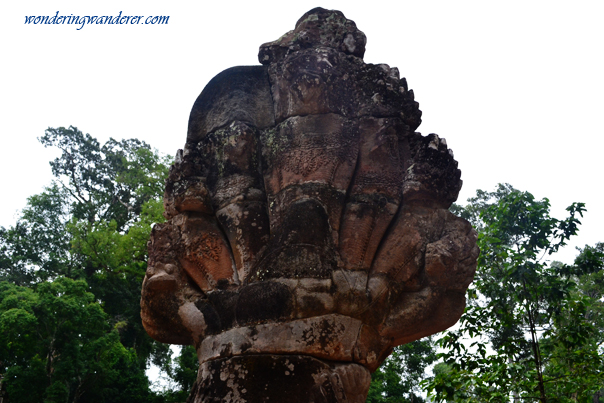
Inner Complex
After entering the second gate we saw more statues and bas-reliefs in the west temple. The large figure of Garuda is the most eye-catching sculpture that we saw. Despite its very old age, it wasn’t as damaged as the other wall carvings. The details of its feathers and face are still clear and intact. Its languid eyes and proud stature commands royalty and authority. This is the only temple where we’ve seen a large Garuda bas-relief like this.

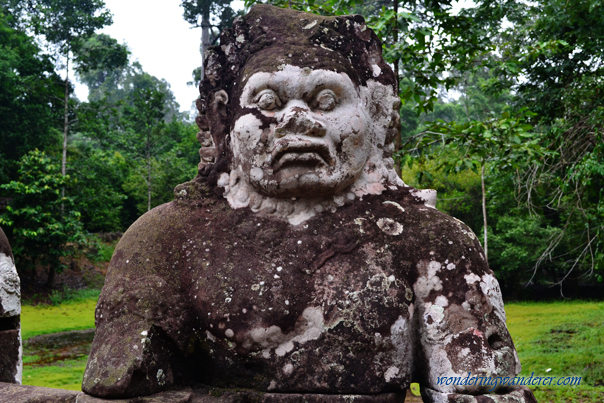
The west temple has three towers that resemble the signature towers of Angkor Wat. It’s modest in size but looks solid and bulky. Bas-reliefs of devatas which are surrounded by leafy patterns elegantly decorate this temple. The space inside the temple is large enough for small gatherings.

Central Sanctuary
Upon leaving the west temple, we saw the larger Central Sanctuary. Despite the sanctuary’s size, its roof looked more modest due to the absence of the iconic temple towers. Its entrance is guarded by two headless statues where one seems to carry a sword. More devata bas-reliefs are carved on its walls and a mural that seems to depict a war can be found on the top of its entry point.
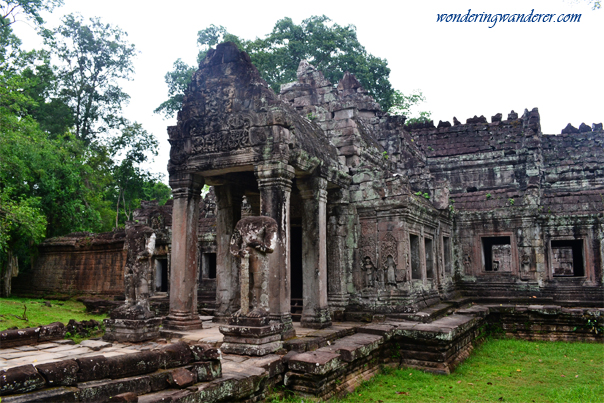

There are some interesting items inside the temple. Perhaps the most noticeable one is the stupa because of its size and being a centerpiece. Looking like a giant bell, a stupa is commonly used to honor the dead. Traditionally, the remains of a dead person are buried underneath it but the practice eventually varied where even the living can be honored with it.
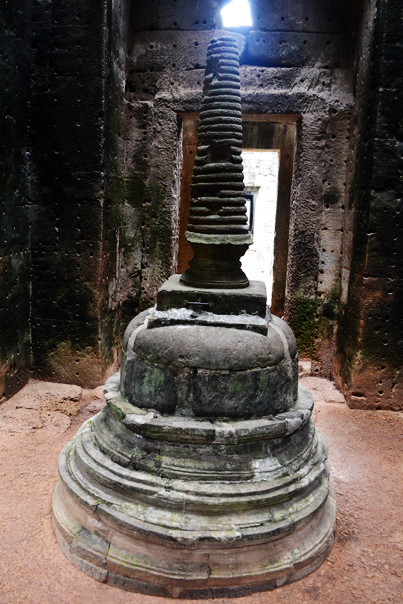
The interior of the central sanctuary is definitely large and its hallways looked like an infinite mirror reflection. It’s gloriously decorated with a number of bas-reliefs that are more than the usual.

Fascinating Building
After stepping outside the Central Sanctuary, we were pleased to see an ancient structure that resembles the famous Parthenon. The lines on its tall pillars clearly indicate how the large blocks were placed on top of each other. Both ends of the tall pillars are elegantly styled with simple double lines and diamond shapes.
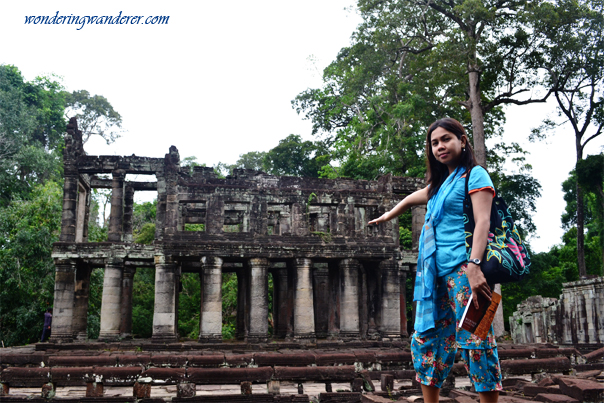
It’s amazing how they came up with the same architectural concept that’s strikingly similar to another country that is thousands of miles away. This can also be said regarding the concepts of tools, weapons, furniture and more. I guess that these are just some examples of the perplexing fundamental line of thinking that links all humans.
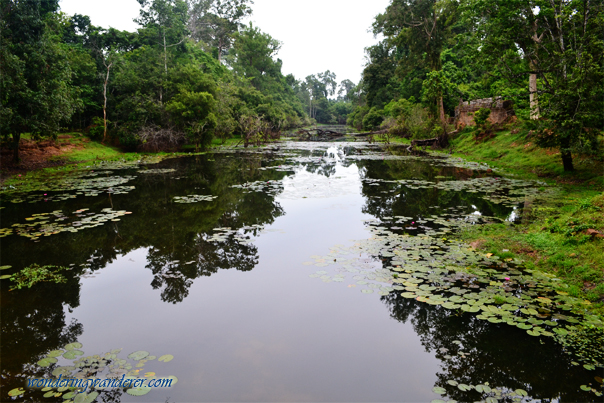
Monstrous Trees
Adding more to our fascination in the Hall of Dancers area are the gigantic trees that have grown out of its walls and temples. It felt like we’re visiting the Ta Prohm temple again. Giant trees on temples like these seem to be a stamp of certification that the structure is indeed ancient. The wonderful blend of an ancient structure with nature like what we saw here is simply enchanting.
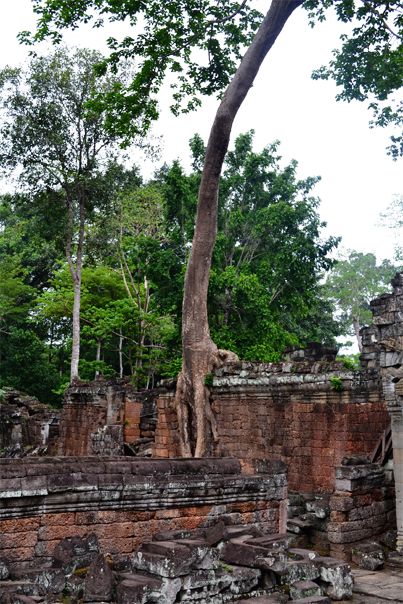

The ancient buildings with tall roofs are marvelous themselves. Concrete building styles like these have a strong influence in some of our modern government buildings. Their medieval touch is also similar to the old Roman Catholic churches here in the Philippines. A tour around this grand temple complex went beyond our typical memorable experience because it flashed plenty of recent memories of our previous tours.

3 thoughts on “Preah Khan Temple – Sacred Sword – Siem Reap, Cambodia”